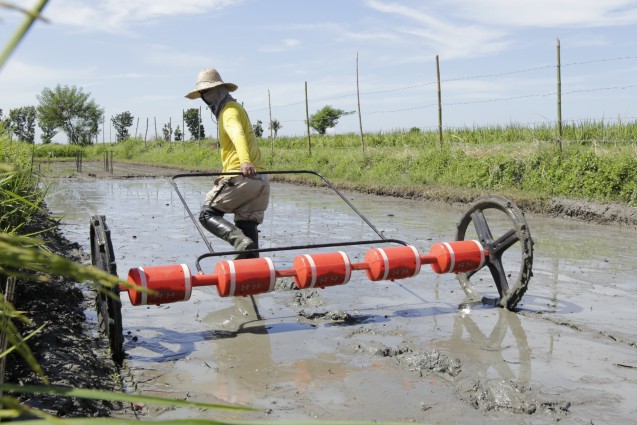Farmers in Isabela, one of the country’s top rice producer, are reaping the benefits of practicing direct seeding, a crop establishment method, in which pre-germinated seeds are sown directly onto the soil surface.
Helen Pasicolan, lead of the direct-seeded rice technology promotion at Philippine Rice Research Institute (PhilRice) in San Mateo, Isabela said that farmers in their demonstration sites gained high yield and reduced their production cost through direct-seeding using drum seeder.
Based on data, rice growers in the villages of Villafuerte and Daramuangan Norte obtained yield ranging from 5.7 to 6.7 t/ha and net income from P49,000 to P88,00. Meanwhile, early technology adopters harvested as high as almost 9 t/ha and gained net income as much as P115,000.
Direct-seeding also reduced labor and diesel costs. Direct-seeded inbred and hybrid rice was produced at P16,000 and P19,740, respectively. Meanwhile, transplanting inbred and hybrid rice were recorded at P22,540 and P26,240, respectively.
Diesel cost was decreased by 60% as field preparation for seedbed and puddling was eliminated. Water use is also reduced by 33–53% because sowing can be done as soon as favorable rainfall has started.
Farmers who experienced the advantages of direct-seeding were participants in the season-long Farmers’ Field School (FFS). Aside from the 91 FFS participants, the technology was also showcased to more than 500 farmers in neighboring barangays and municipalities through Farmers’ Field Days. Farmers in nearby municipalities of San Mateo such as Ramon, Alicia, and Cabatuan have also started to adopt the technology.
“I [always invite my co-farmers in my farm] for them to see the benefits of direct-seeded rice. I also encourage them to attend Farmers’ Field School from which I learned more about the technology,” Emil Garcia, technology adopter, said.
PhilRice Isabela had partnered with other agencies to demonstrate further trials that will compare direct-seeded and transplanted rice in more barangays.
“The Department of Agriculture, local government unit, and Agricultural Training Institute already gave their commitment in promoting this technology to other sites in Isabela, as well as areas outside the province,” Pasicolan said.





